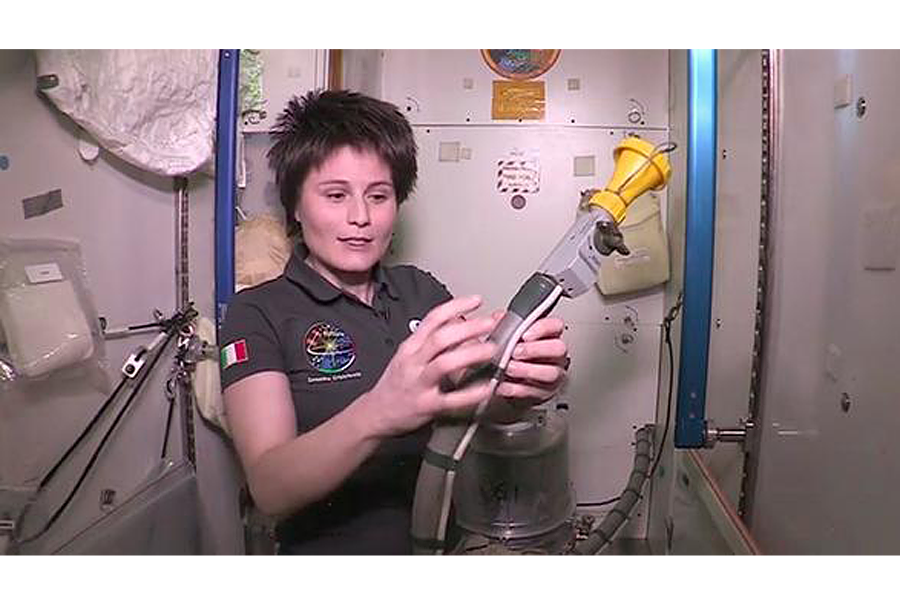Italian astronaut answers everyone's first question about spaceflight
Loading...
Sen—In a series of videos, Italian astronaut Samantha Cristoforetti has given a guided tour of the International Space Station (ISS), beginning with the first thing people want to know about, the toilet facilities.
The lavatory on the ISS uses suction. Solid waste is stored and put aboard cargo ferries to burn up in Earth's atmosphere. Water is a precious commodity aboard the ISS so everything, from water the astronauts wash in to their urine, is recycled into drinking water.
When the new espresso machine was recently installed on the ISS, NASA astronaut Scott Kelly who is spending a year aboard the ISS while his identical twin brother and fellow astronaut Mark remains on Earth tweeted "#Recycle Good to the last drop! Making pee potable and turning it into coffee" to which his twin brother Mark responded: "your coffee made from your urine sounds awful."
The ISS has been continuously occupied since November 2000. Since then over 200 people from 15 countries have visited the space station.
Expedition 43 crew members currently on board the ISS include NASA astronauts Commander Terry Virts and Scott Kelly, European Space Agency astronaut Samantha Cristoforetti and Russian cosmonauts Anton Shkaplerov, Gennady Padalka and Mikhail Kornienko
For details of every human who has been in space since the first spaceflight of Yuri Gagarin on April 12, 1961, including who is in space now and their previous missions, check out Sen’s human spaceflight app.
International Space Station toilet tour. Credit: ESA
Related Links:
Italian astronaut proudly sips first espresso in space
NASA twins study may shed light on mysteries of microgravity
Blog: Progress mission failure, root cause still uncertain
Original story from Sen. © 2015 Sen TV Limited. All rights reserved. This material may not be published, broadcast, rewritten or redistributed. For more space news visit Sen.com and follow @sen on Twitter.







